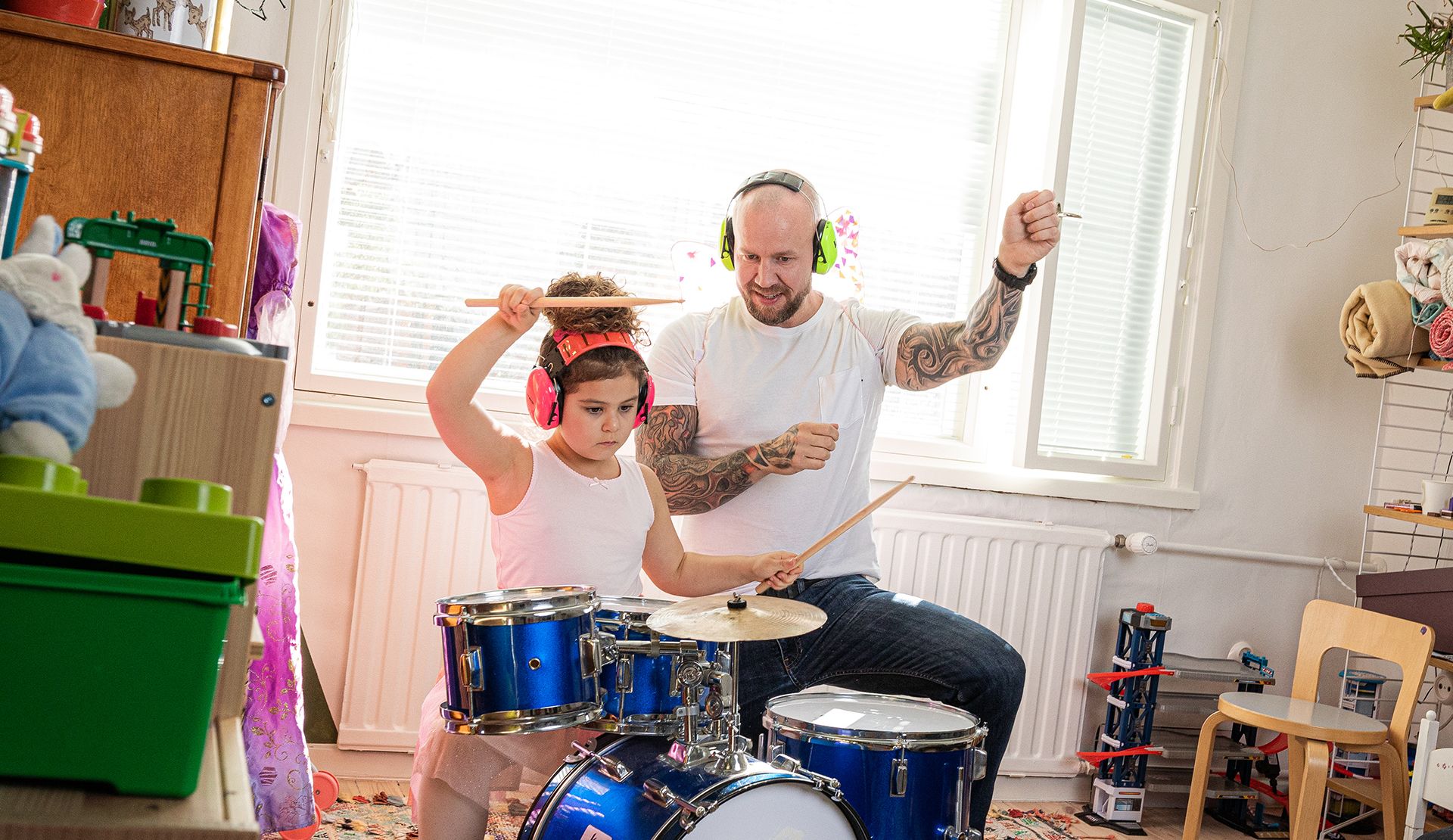
Gonorrhoea
Basic facts about gonorrhoea
- Gonorrhoea is transmitted through unprotected sex.
- The average incubation period of gonorrhoea before any symptoms occur is 2–5 days, and it can be longer in female patients, up to 2–3 weeks.
- It is easy to diagnose gonorrhoea and to treat it with antibiotics.
Symptoms of gonorrhoea
Gonorrhoea is often associated with certain symptoms, but sometimes the infection may also be asymptomatic.
Symptoms of gonorrhoea in male patients:
- intense burning sensation during and after urination
- frequent need to urinate
- purulent urethral discharge.
If left untreated, gonorrhoea may cause pain during an erection, constrictions in the urethra or epididymitis.
Symptoms of gonorrhoea in female patients:
- minor lower abdominal pain
- vaginal discharge
- burning sensation when urinating.
If left untreated, gonorrhoea may cause pelvic inflammatory disease, in which the infection spreads through the cervix to the uterus and fallopian tubes. The symptoms may include severe abdominal pain aggravated by movement, increased vaginal discharge or bloody spotting, fever and tenderness of the uterus and its adjacent organs during an internal examination. Pelvic inflammatory disease caused by gonorrhoea can lead to infertility, ectopic pregnancies and prolonged lower abdominal pain.
The most common locations of a gonorrhoea infection are:
- the urethra
- the mouth and throat
- the rectum
- the cervix
- the infection can also spread to the eyes through the fingers.
Gonorrhoea can also spread to the eyes through the fingers. Depending on the type of sex, a gonorrhoea infection of the mouth and throat is also possible. In the case of oral gonorrhoea, the symptoms include a burning sensation in the mouth, a sore throat and inflammation of the mouth (stomatitis).
Gonorrhoea test
The number of gonorrhoea infections in Finland has increased over the past 10 years, and the number was particularly high in 2022 with nearly 1,000 diagnosed infections. Three out of four infections were diagnosed in men. If you have any cause to believe that you may have gonorrhoea, please do not hesitate to get tested. If left untreated, gonorrhoea may cause severe consequences.
You should get tested if you are experiencing gonorrhoea-like symptoms. If your sexual partner has been diagnosed with gonorrhoea, you should also get tested, even if you are asymptomatic. All sexual partners from the past 3–6 months should be informed of the infection and referred for testing. Most cases of gonorrhoea can be diagnosed with a urine sample, in which a possible chlamydia infection can also be detected. However, in the case of suspected oral or rectal gonorrhoea, a sample of the possibly infected region must be taken.
Book an appointmentTreatment of gonorrhoea
Gonorrhoea is usually treatable with a combination of several antibiotics. Regular sexual partners should be treated at the same time. Gonorrhoea strains resistant to several antibiotics have developed over the years, so a culture sample is taken before treatment.
After treatment, you should refrain from having sex for one week and use condoms and oral protection during intercourse until a negative test is obtained in the follow-up examination four weeks after treatment.
Prices for appointments with specialists, such as gynaecologists, dermatologists, cardiologists, orthopaedists and ophthalmologists, can be found in our appointment booking service.
| Service | Price estimate |
|---|---|
| Appointment with a specialist, 20 min Price per appointment. | from 99,80 € Without Kela reimbursement from 129,80 € |
| Appointment with a specialist, 30 min Price per appointment. | from 114,80 € Without Kela reimbursement from 144,80 € |
| Appointment with a specialist, 45 min Price per appointment. | from 142,80 € Without Kela reimbursement from 172,80 € |
| Gynaecologist's appointment, 20 min | from 69,80 € Without Kela reimbursement from 139,80 € |
| Gynaecologist's appointment, 30 min | from 74,80 € Without Kela reimbursement from 144,80 € |
| Dermatologist's appointment, 20 min | from 117,70 € Without Kela reimbursement from 147,70 € |
| Dermatologist's appointment, 30 min | from 127,80 € Without Kela reimbursement from 157,80 € |
| ENT doctor's appointment, 20 min | from 112,80 € Without Kela reimbursement from 142,80 € |
| ENT doctor's appointment, 30 min | from 133,80 € Without Kela reimbursement from 163,80 € |
| Paediatrician's appointment, 20 min | from 115,20 € Without Kela reimbursement from 145,20 € |
| Paediatrician's appointment, 30 min | from 134,80 € Without Kela reimbursement from 164,80 € |
| Orthopaedist's appointment, 20 min | from 111,80 € Without Kela reimbursement from 141,80 € |
| Orthopaedist's appointment, 30 min | from 133,80 € Without Kela reimbursement from 163,80 € |
| Appointment with a psychiatrist, 45 min Price per appointment. | from 109,80 € Without Kela reimbursement from 159,80 € |
| Appointment with a psychiatrist, 60 min Price per appointment. | from 120,80 € Without Kela reimbursement from 180,80 € |
| Ophthalmologist's appointment, 30 min | from 127,80 € Without Kela reimbursement from 157,80 € |
| Ophthalmologist's appointment, 45 min | from 138,80 € Without Kela reimbursement from 168,80 € |
More information about sexually transmitted diseases
Chlamydia
The most common sexually transmitted infection in Finland. Almost all chlamydia infections are asymptomatic.
Condyloma or genital warts
A disease caused by the HPV virus, transmitted through sexual contact.
Genital herpes
The most common cause of genital ulcers. In most cases, the symptoms appear 4–14 days after infection. Can also be asymptomatic.
HIV and AIDS
The HIV virus causes a permanent infection that slowly destroys the human immune system.
Mycoplasma genitalium
Is a sexually transmitted bacterium that causes an inflammation with symptoms that resemble chlamydia.
Sexually transmitted diseases
Are transmitted through unprotected sexual contact. Sexually transmitted diseases should always be treated as early as possible.
Syphilis
About 3–4 weeks after a syphilis infection, a painless ulcer will appear at the site of infection and it will heal spontaneously within a few weeks.
Other related services
Frequently asked questions about gonorrhoea
Gonorrhoea is often associated with certain symptoms, but sometimes the infection may also be asymptomatic. The most common symptoms of gonorrhoea in men include severe burning sensation during or after urination, frequent need to urinate and purulent urethral discharge. In women, symptoms of gonorrhoea include minor lower abdominal pain, vaginal discharge and a burning sensation when urinating.
Gonorrhoea in the mouth is possible depending on the type of sex. Symptoms of oral gonorrhoea usually include a burning sensation in the mouth, a sore throat and inflammation of the mouth (stomatitis).
If you think you may have a gonorrhoea infection, it is advisable to study the possibility of infection with a laboratory test. Most cases of gonorrhoea can be diagnosed with a urine sample, in which a possible chlamydia infection can also be detected. If oral or rectal gonorrhoea is suspected, a swab sample is always required.
Gonorrhoea is treated with antibiotics. Gonorrhoea is usually treated with a combination of several antibiotics. The infected person’s sexual partner should also be tested and treated at the same time. After treatment, you should refrain from having sex for one week and use condoms or oral protection during intercourse until a negative test is obtained in the follow-up examination four weeks after treatment.
In men, untreated gonorrhoea may cause pain during an erection, strictures in the urethra and epididymitis. In women, the most severe sequela of untreated gonorrhoea is pelvic inflammatory disease, which may lead to infertility if left untreated.
